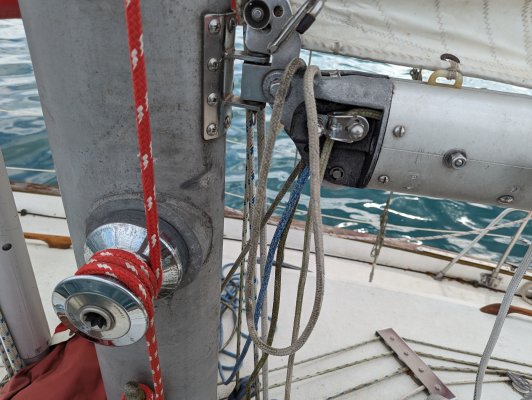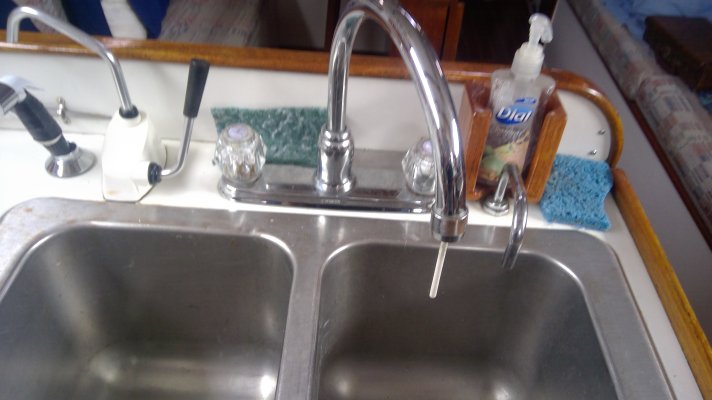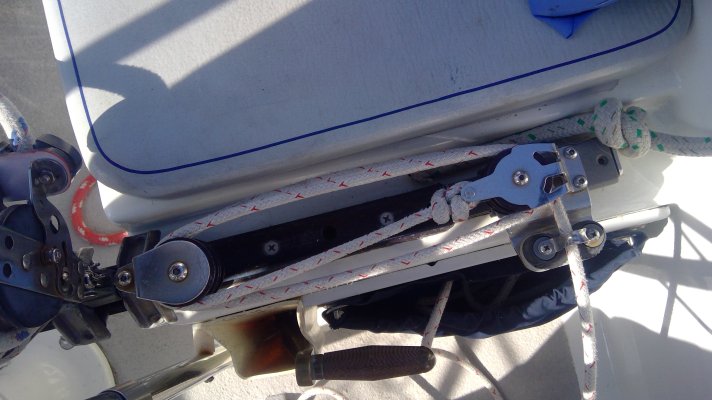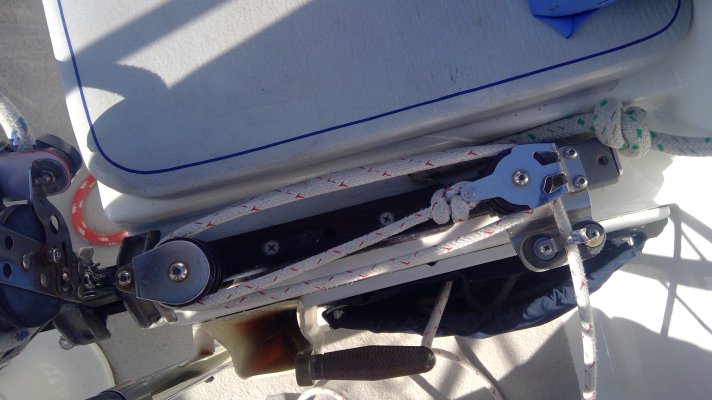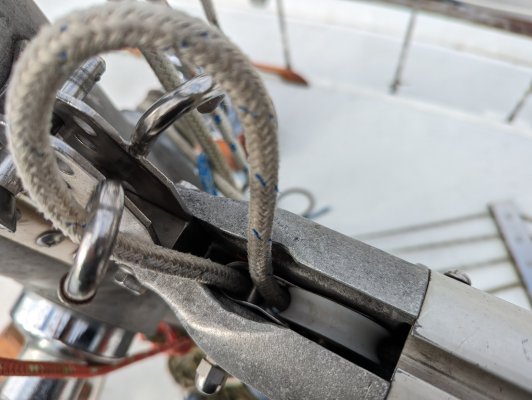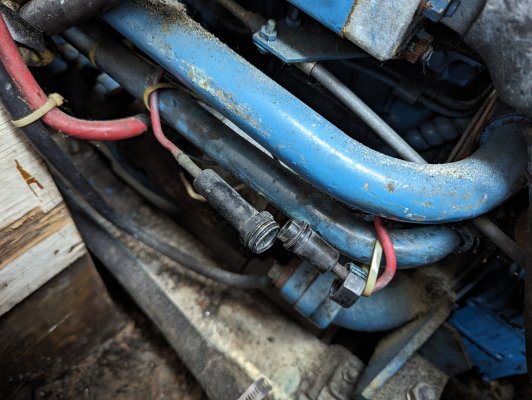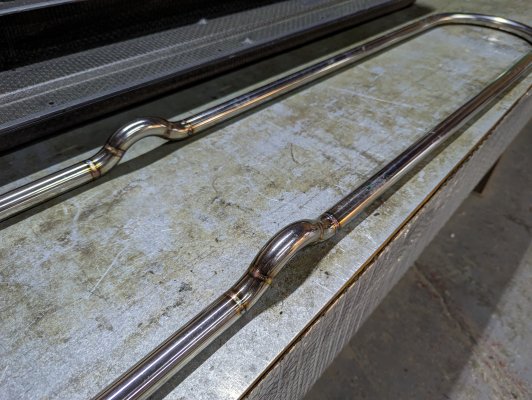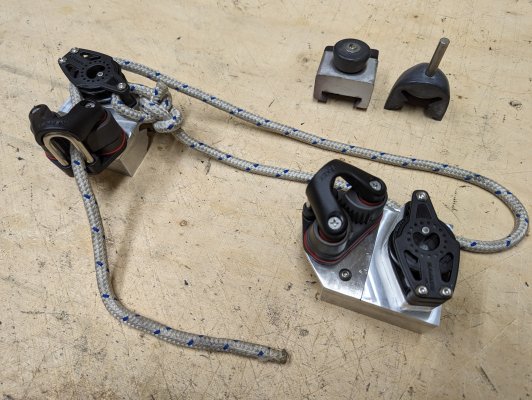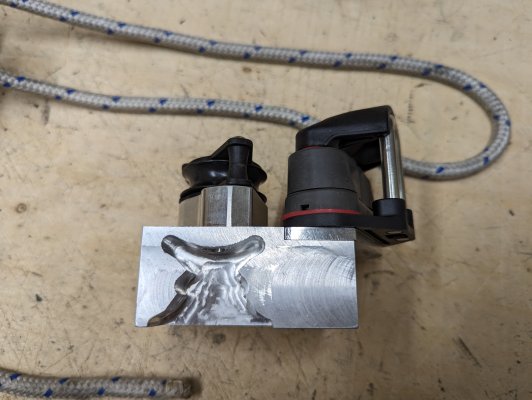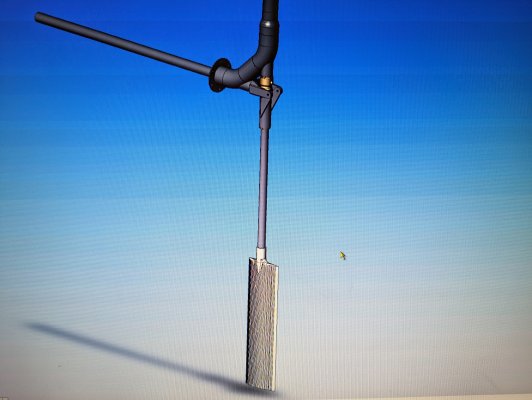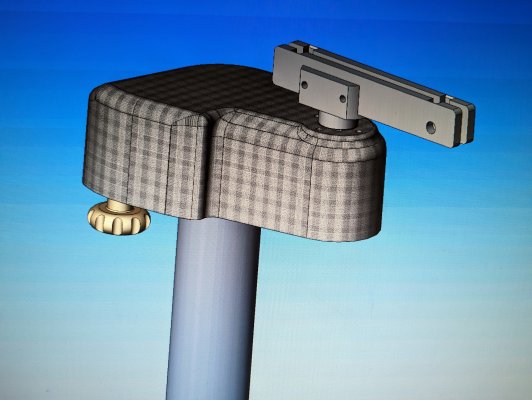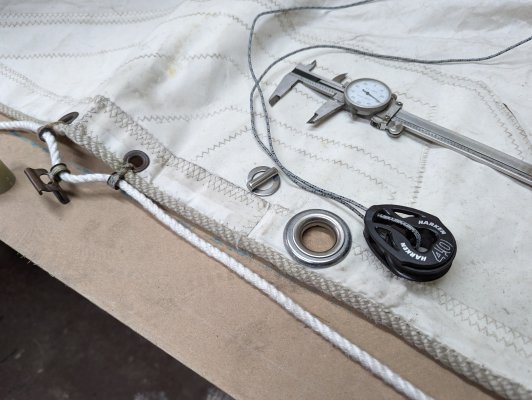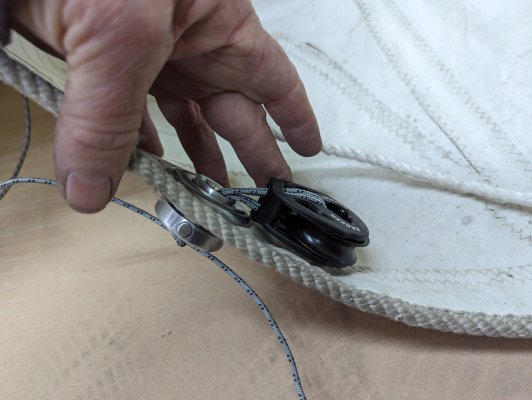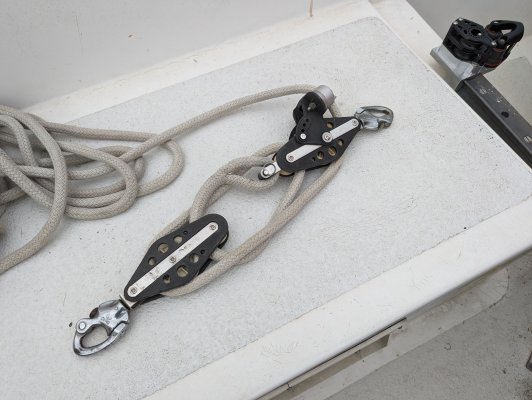On the Jib, my first guess is that changing job size will make some, but not a huge difference in weather helm. Most likely your main is trimmed too tight. Ease the main until it starts to form a bubble at the luff of the sail. Then trim in until that bubble just barely goes away, and no more. Some weather helm is needed to sail effectively at close angles. The correction you give against weather helm gives the rudder lift to counter leeway and the boat being pushed sideways more than going forward. If you trim out all the weather helm, you might feel like you are sailing close to the wind ( 30 degrees apparent or so ) but if you look at your track on a GPS you will be going sideways, and your true sailing angle to the wind will be closer to 80 degrees, mostly not going forward at all.
It looks like you are building a servo pendulum type windvane, not an aux rudder?
In either case, there is a significant issue. The mount for the airvane you have is horizontal. It needs to be at an angle, Looking at my monitor (but not measuring) it is about 30 degrees. Giving that an angle will cause the airvane to rotate slightly as it moves. So, if you are off course by only a small amount, the vane will move a small amount. As it moves, the angle of the vane will match the angle of the wind, and then hold in a mid position, instead of flopping all the way to one side. Further, the mechanics are such that if the airvane moves 10 degrees to one side, the water vane will only move 10 degrees, because as the watervane moves it also turns. So having moved 10 degrees, it will have turned to be straight again.
If you don't build those mechanics into the vane, then if you are off course even 1 or 2 degrees, the airvane will go hard over to one side, and the corrections will be to turn the rudder hard over and the boat will grossly over correct. The result is the boat will sail in a wild S course instead of holding a line. I have seen this a few times on vanes that were home built. Windvane steering is simple in principle, and looks simple at a glance, but with a study of them there is a lot of work and engineering in tweaking those angles and mechanics.
Here is a video of my monitor steering in about 30 kts, and 4 meter waves. I am filming from below decks looking up, so you don't see the swell. Notice how calm the steering is. The air vane and wheel are both moving mostly very slowly. The vane is often close to vertical, and the wheel rarely makes more than a 1/4 turn. With out the mechanics I described, the wheel airvane would go from hard over one side to hard over the other side, the wheel would spin wildly, and in the 4 meter waves the boat would probably crash.
Also, because of those mechanics, the size of the vanes isn't as critical. If the airvane is too small, it won't work in light air. But if it is too large, then it doesn't cause any issue, only it's less convenient. Same with the underwater paddle. Too small and it won't work at slow boat speeds. Too large and it will still work fine, but will cause excess drag.


